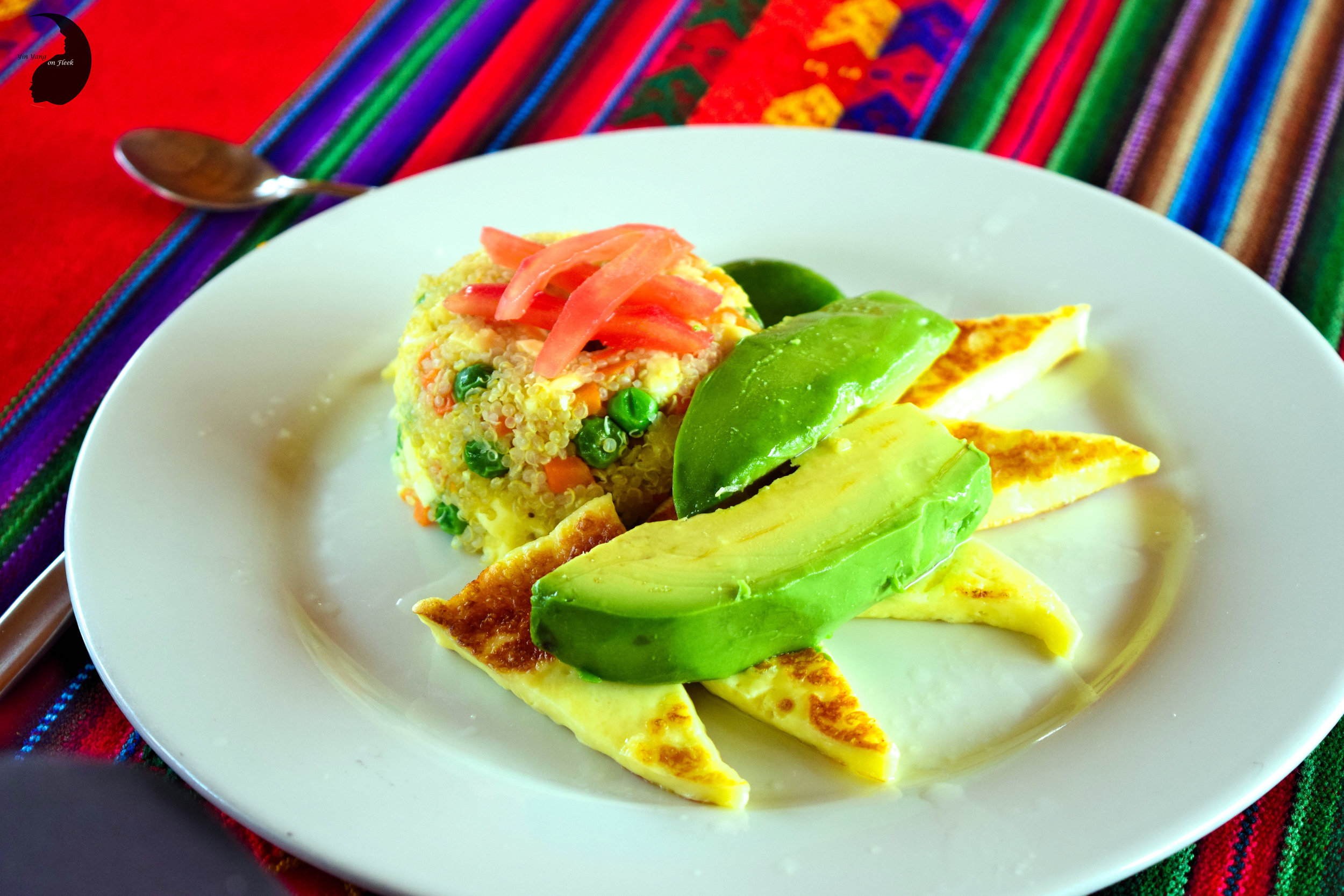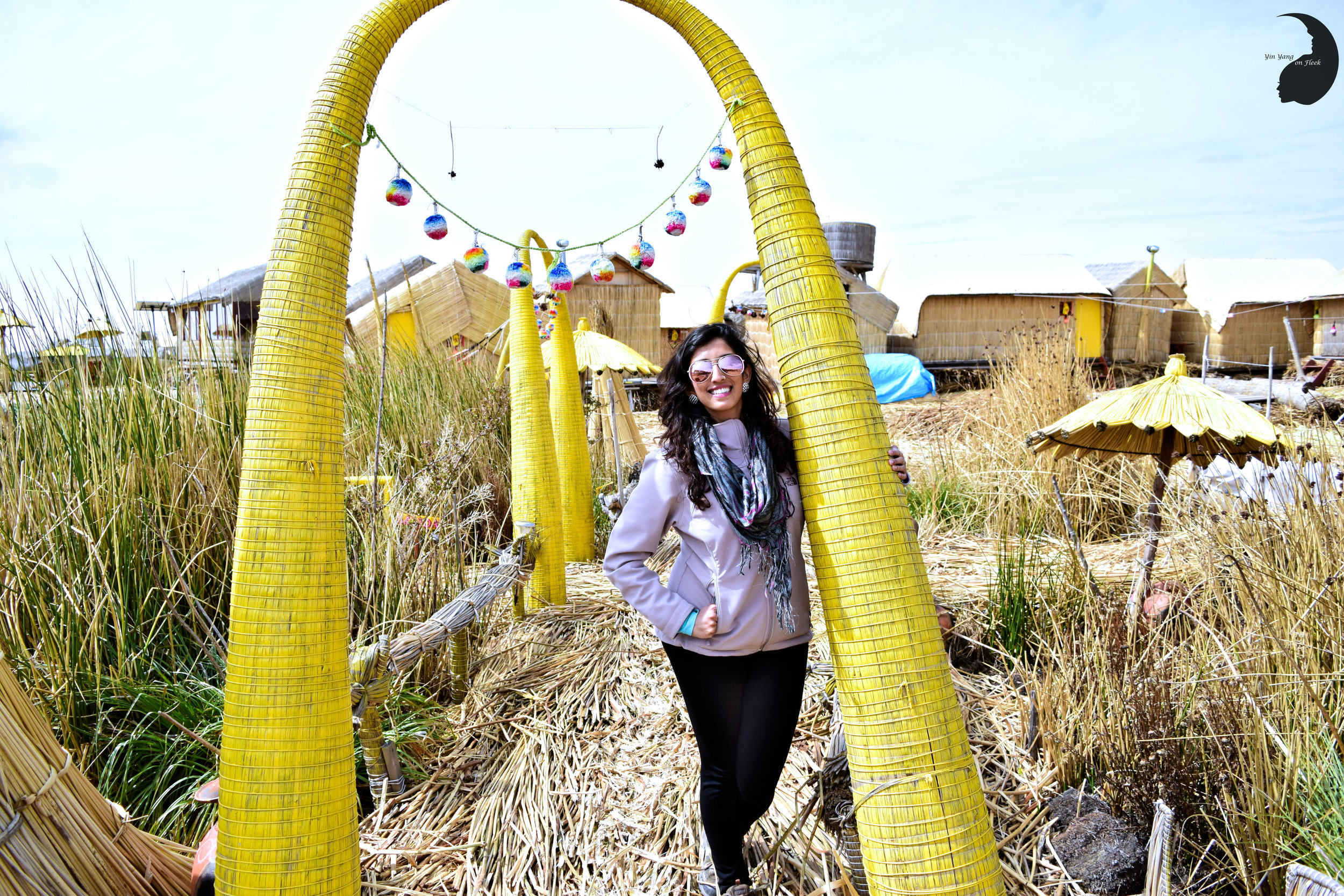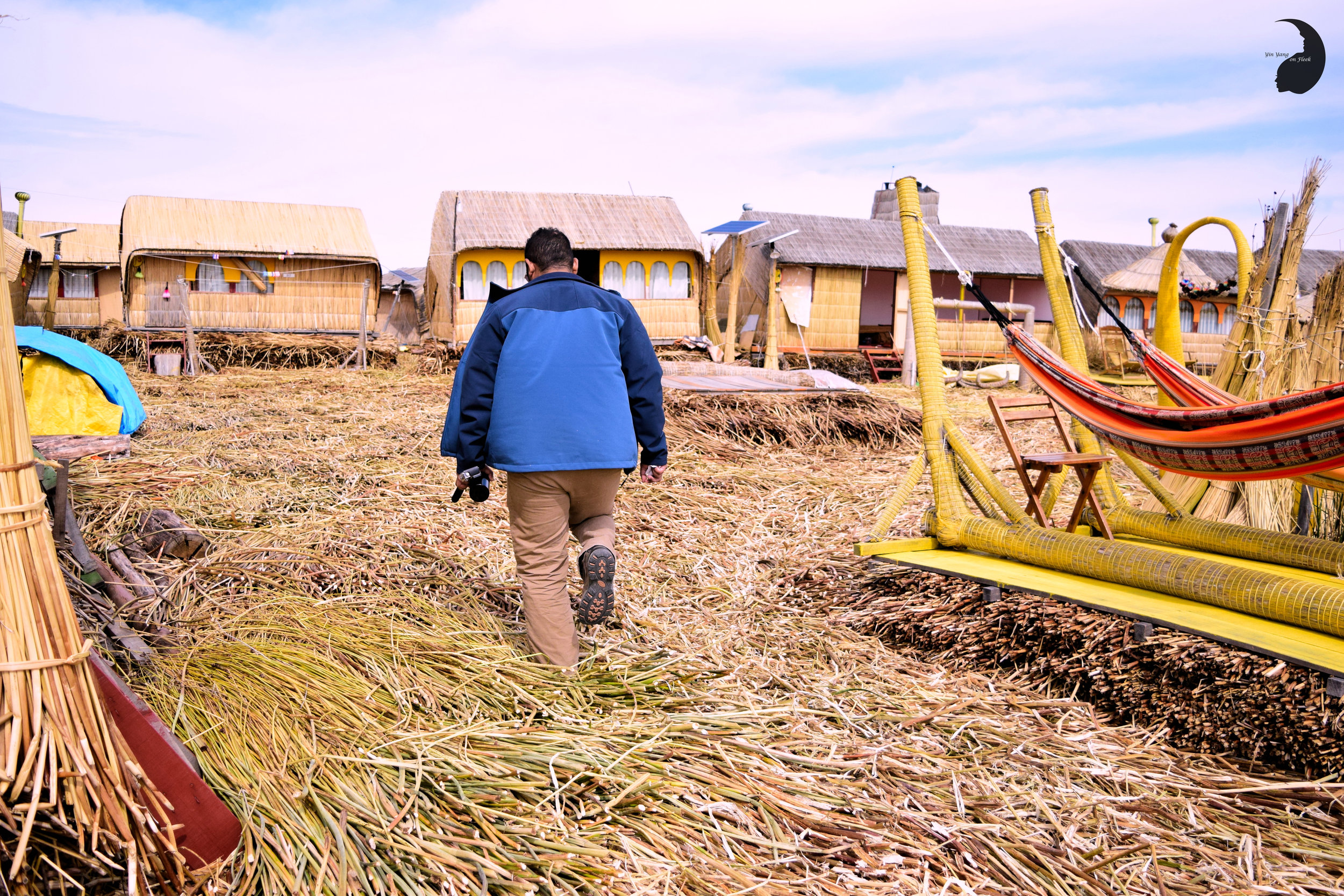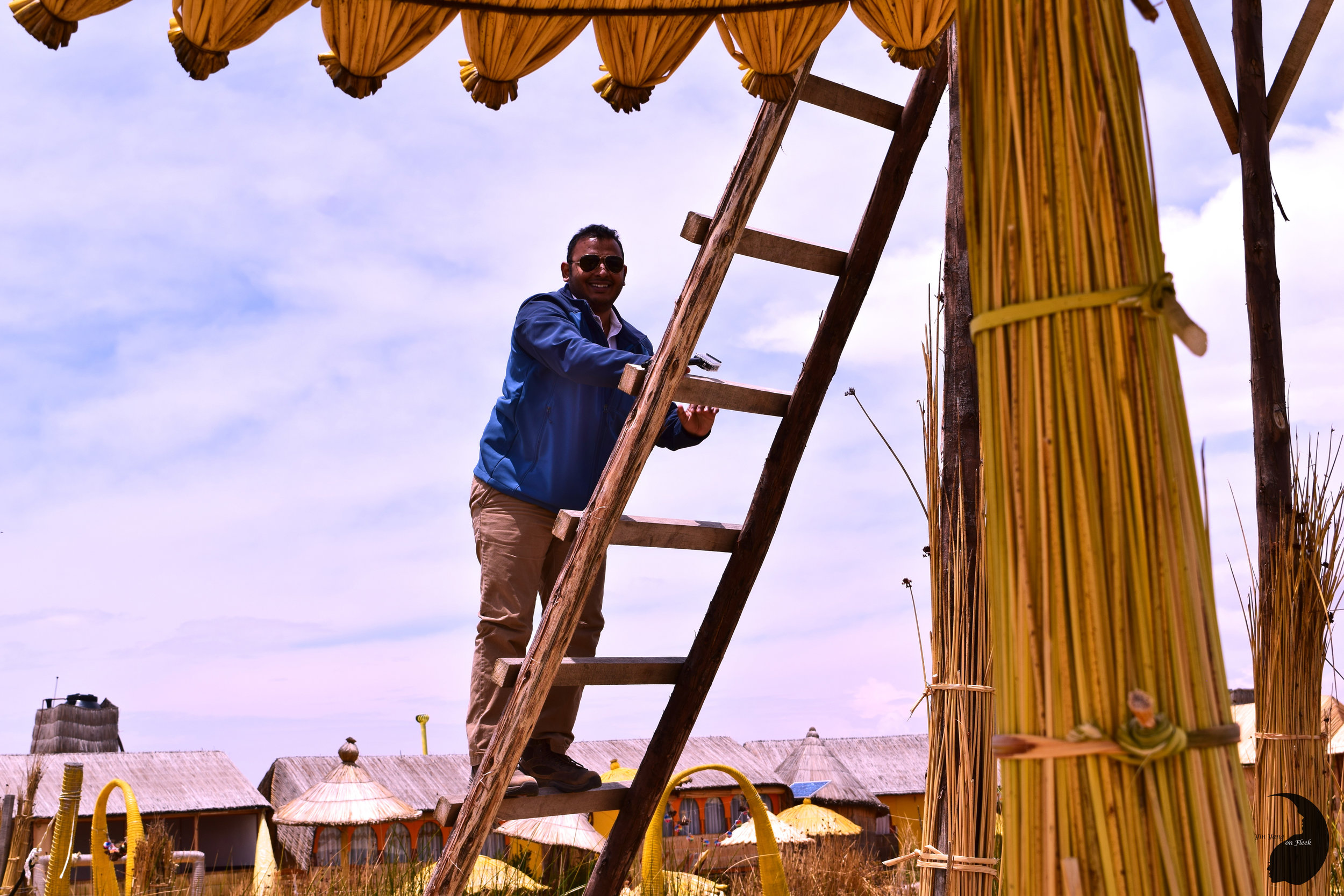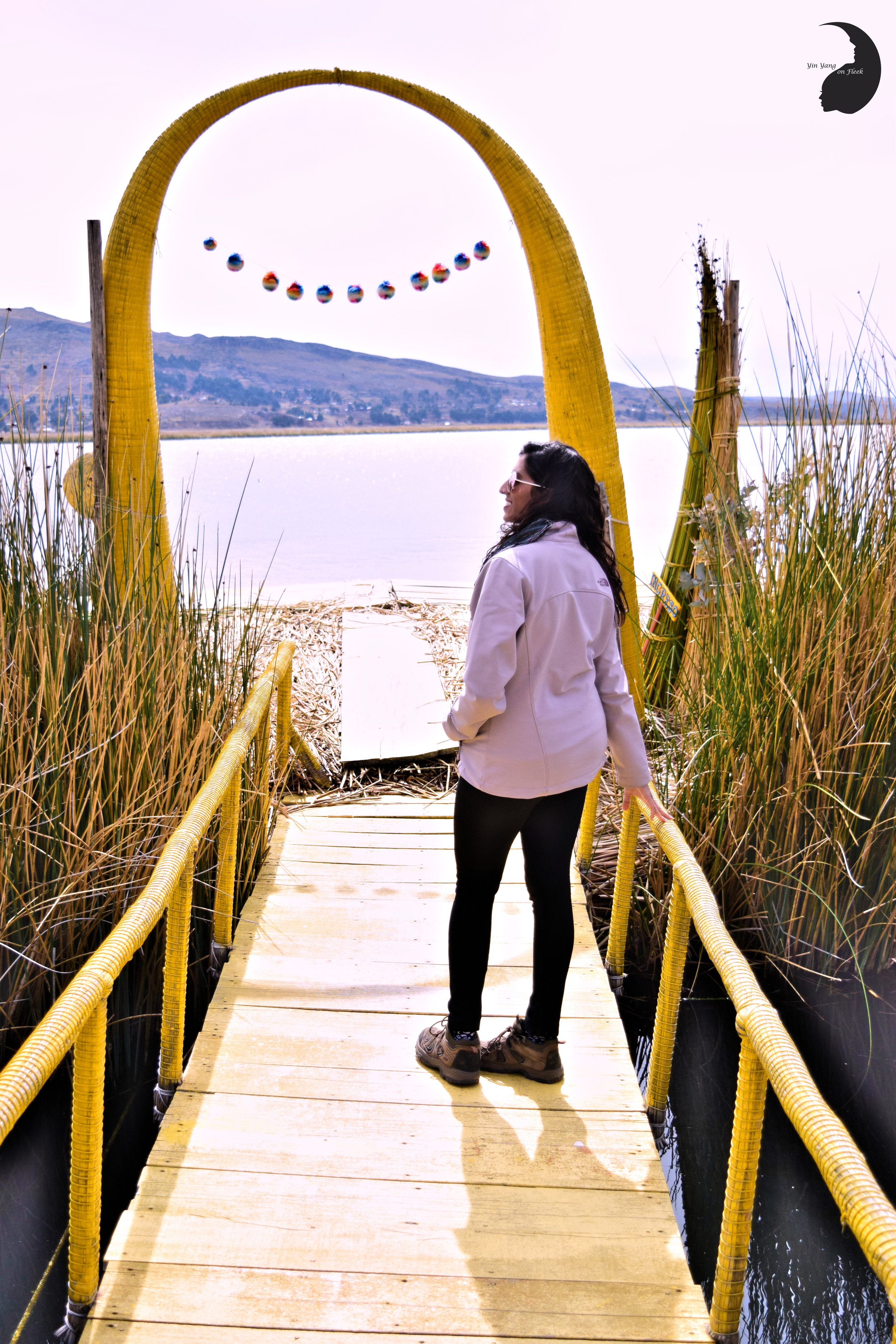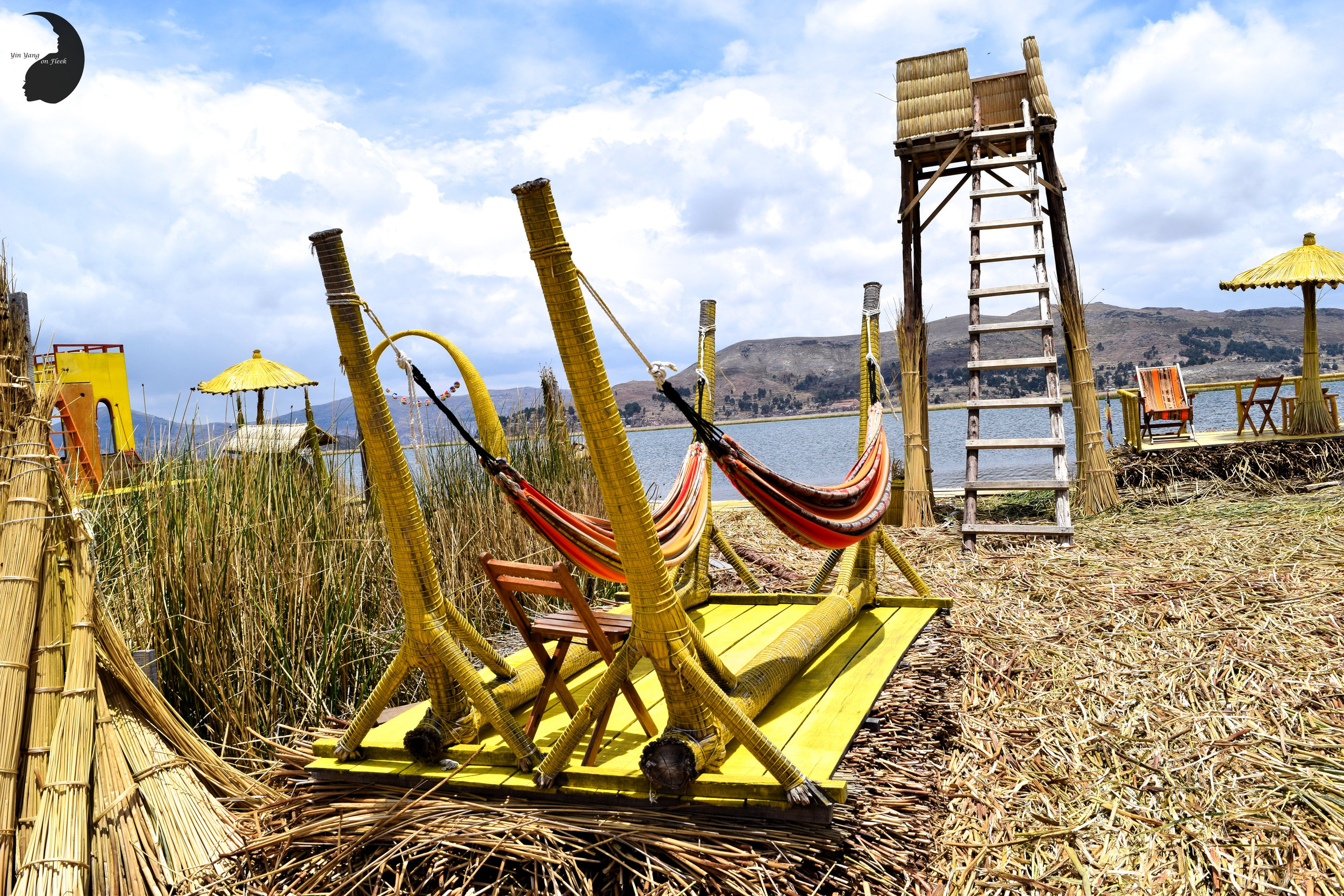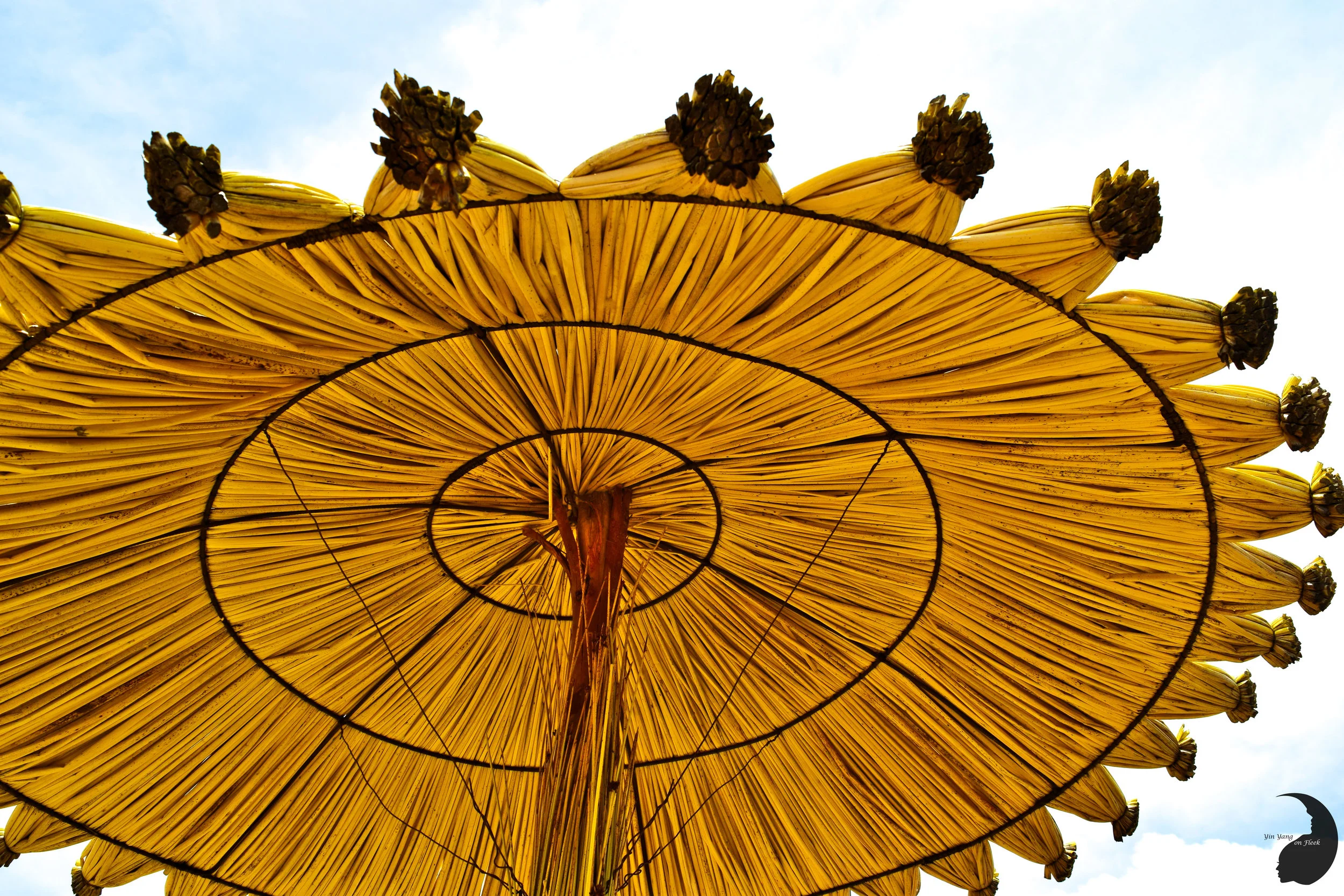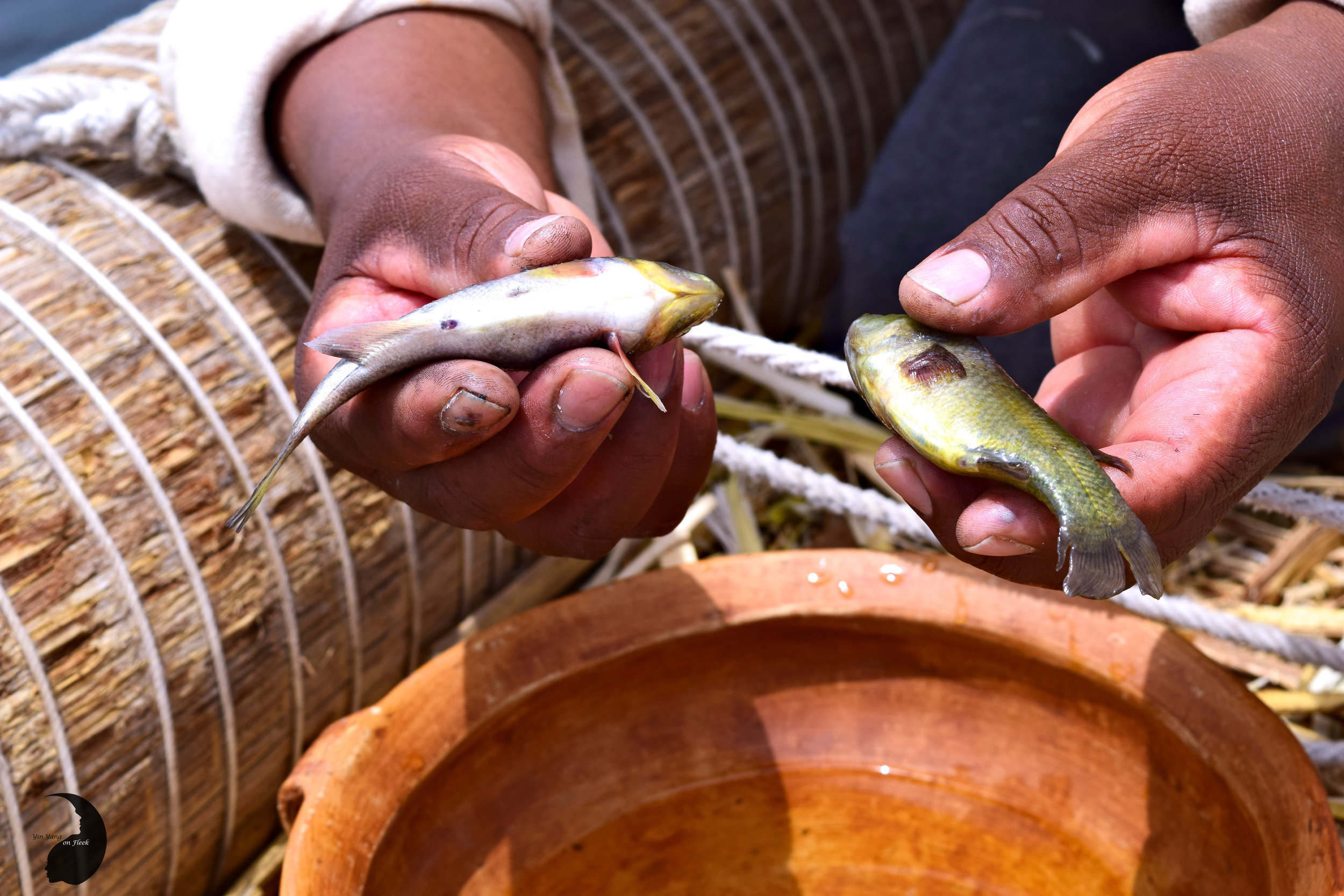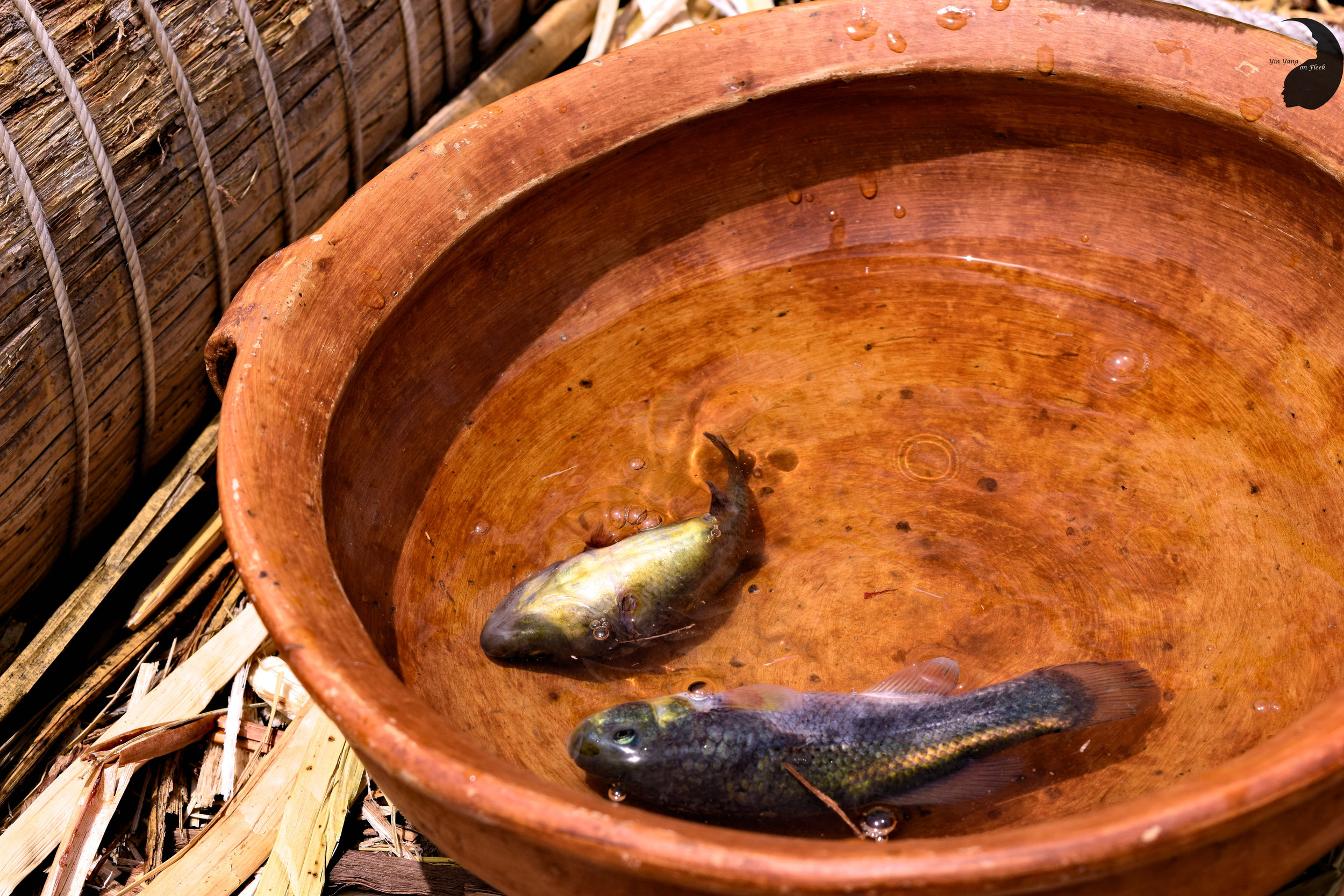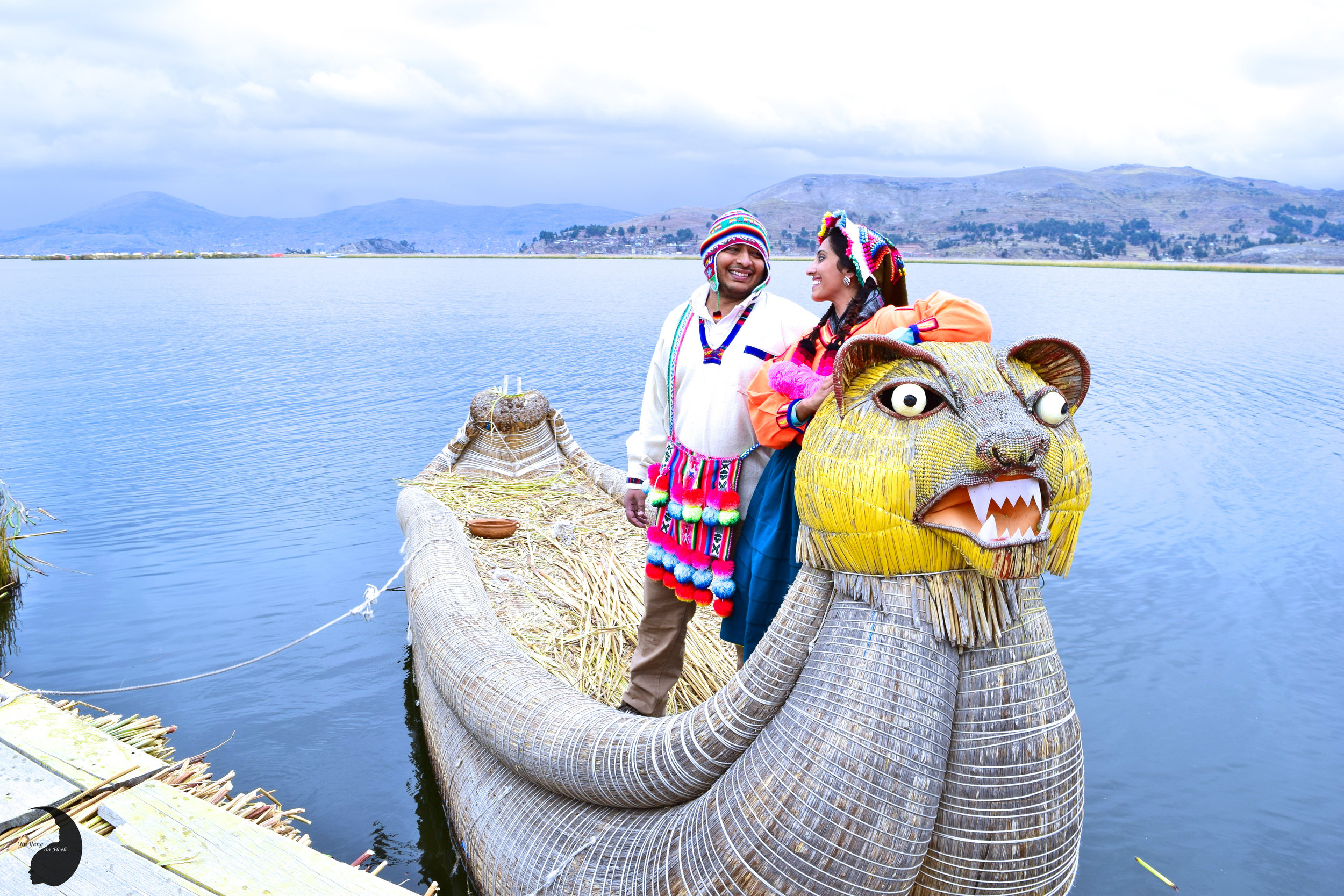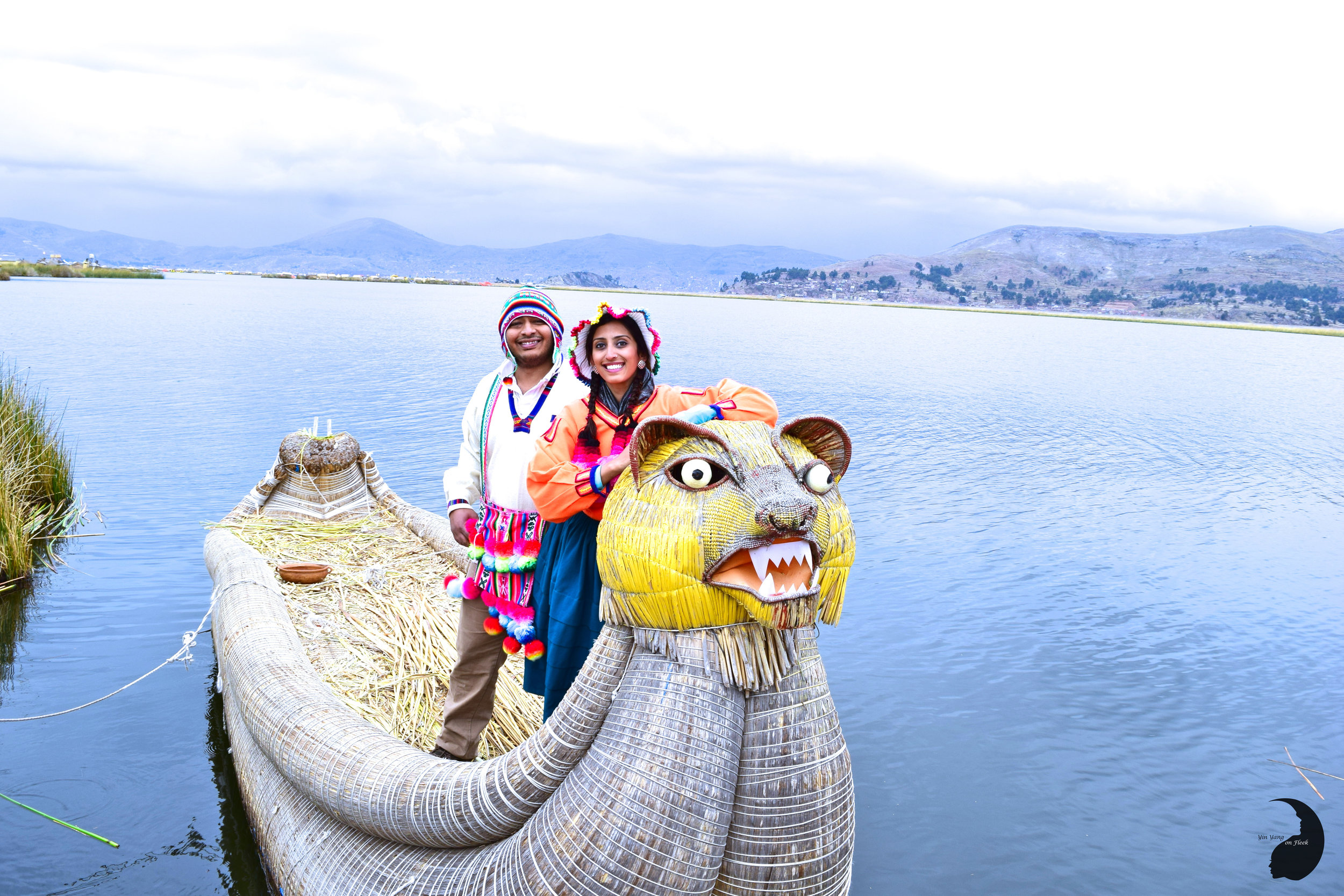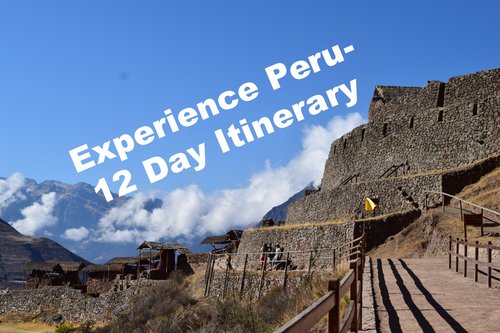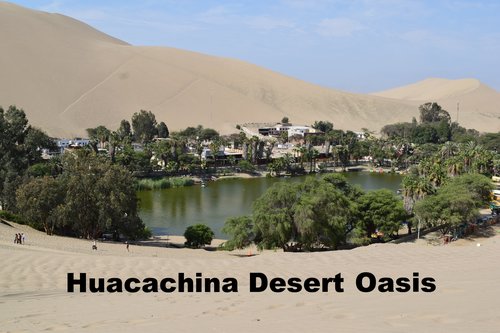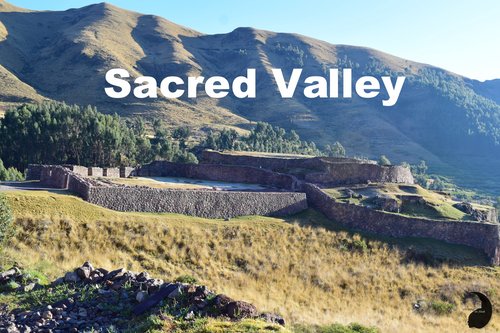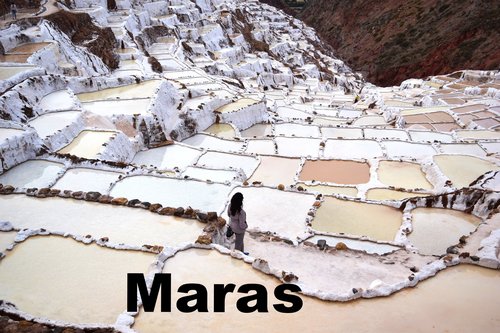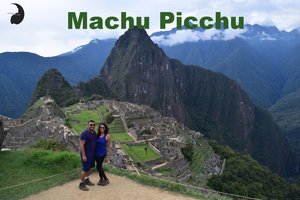Peru is one such country that is so diverse in its landscape and rich in its culture. If you have been following our Peru travel blog series, you would have realized that every location is unique and captivating in its own right, so much that you just want to pack your bags and go! We are all set to take you on a magical journey through Puno and the lake Titicaca region of Peru, the southernmost point of our travels. We hope you are not tired of our llama-alpaca obsession just yet, cause we are bringing more of these warm fuzzies to you this week! Yaaas!
TRAVEL
We hopped on board the Inka Express bus from Cusco to Puno and enjoyed our ten hour guided bus journey. This was an affordable and comfortable option. For more details, click: Inka Express Journey.
For our return trip, we caught an early morning Avianca flight from the city of Juliaca near Puno to Lima.
ITINERARY
We were so excited to visit Puno and the magnificent lake Titicaca, which is not only known for its expanse and beauty, but is also the highest navigable lake in the world!!! We spent three days in Puno and vowed to unwind, take it easy, and slow down for the last few days of our travels in Peru. I kid you not...our bodies were so relaxed during this lag of our journey and we definitely took advantage of the 'power siestas' that came recommended to us by our hosts! We stayed in the most cozy accommodations and experienced a true culture trip in Puno. Here is how we spent our time:
- Day 1- Checked in to Mirador del Titikaka by evening. Watched the sun set over lake Titicaca and took in the stunning lake views that surrounded us. Reminded our hearts to stay still as we enjoyed the picture perfect scenery.
- Day 2- Had a blast with the llamas and alpacas at a mini farm at Mirador del Titikaka (best time ever). Took a speed boat to Uros Khantati. Spent a day and night on the floating islands learning about the culture and lifestyle of the Uros folks.
- Day 3- Visited the Sillustani Tombs on the shore of lake Umayo and the village of Atuncolla with All Ways Travels. Fabulous day! Checked into Casa Andina Premium to spend the night.
ACCOMMODATION
Note: The key to booking your accommodations in Puno is to find places that have beautiful lake views.
Most hotels with great views of lake Titicaca are situated on the outskirts of Puno. If you book a hotel in downtown Puno, your chances of having a lake facing room is slim. And trust us...you don't want to miss out on these views for anything! We stumbled upon some lucky finds. Take a peek!
Mirador del Titikaka
We can't recommend this place enough. As soon as we set foot on their property, we were instantly smitten by the cozy and rustic vibe of the beautiful hotel. Everything about the place felt perfect and I gleaned from ear to ear while doing my 'happy dance'!
The hotel staff coordinated with us promptly before our arrival and arranged a taxi to pick us up from the Puno bus stop. This was very helpful and allowed us to get to the hotel property easily which was on the outskirts of the town. They went out of their way to take us to a local laundromat and even picked up our finished laundry late at night for us. Our hotel room was tastefully decorated and the lake view was surreal! Our morning breakfast was fresh and filling. And believe it or not, we booked this amazing hotel room for less than 100 USD/night.





The highlight of our experience at Mirador del Titikaka was the mini llama and alpaca farm on their property. We had all the animals to ourselves on a bright chilly morning. We played with these fuzzy creatures and wore our widest smile! Ummm....we even got spat on by the llamas. What a learning moment- when llamas feel threatened, they spit to ward off the threat! Lol! :0
CASA ANDINA PREMIUM
We enjoyed a comfortable stay at Casa Andina Premium in Puno. This is a popular hotel among tourists and has all the comforts of well known standard hotel chains. To be honest, we slept through most of our stay at this hotel. When we managed to drag ourselves out of bed in between our lengthy siestas, we appreciated the soothing lake views and hearty meals at Alma, the restaurant on site.
LOCAL ACTIVITIES
A typical itinerary in Puno includes the following:
- Visit Uros, the floating islands of Lake Titicaca.
- Visit other popular islands on the lake such as Taquille and Amantani.
- Book a home stay with the locals. What better way to learn about the people and their lifestyle than spending a night or two with them in their homes!
- Visit the Sillustani burial towers during a day excursion. Use this opportunity to visit local villages and to enjoy culinary delights at family owned restaurants.
Note: We would definitely recommend taking a look at All Ways Travels for your Puno tour bookings. They are a reliable tour operator with knowledgeable and warm staff. They also give back to the community by living up to their motto of sustainable tourism by supporting local home stays and restaurants. We really enjoyed our Sillustani day trip with them. If time was on our side, we would have booked a few of their interesting 'culture trips'. Do check out their website for details- All Ways Travels.
Uros Khantati
We always try to seek out unique experiences during our travels. When we decided to head to Puno, we were awestruck by the stunning images of the floating islands. One thing that topped my bucket list was to spend time on the floating islands to learn about the fascinating lifestyle of the Uros people. When I began my travel search, I was a tad bit disappointed with most commercial tours that only made a short pit stop at the Uros floating islands for about an hour or so en route to other touristy islands such as Taquille.
Luckily, during the course of my search, I stumbled upon Uros Khantati, a unique home stay that came well recommended on TripAdvisor. As I read more on this option, I realized that it was exactly what we were looking for!
Note: You can book your stay at Uros Khantati by emailing the host (Cristina Suaña) directly. They only accept cash as payment on the island. It is suggested to have soles on your person for your payments. As mentioned in a previous blog, the locals are very particular about dollar bills and they will not accept your bills if it has the slightest rip on it. I believe the local banks give them a hard time about exchanging foreign currency if it is not in good condition.
We felt pressured to buy hand woven knits and handicrafts made by our host family. We would suggest keeping a few extra soles handy in case you get into a situation like we did :0

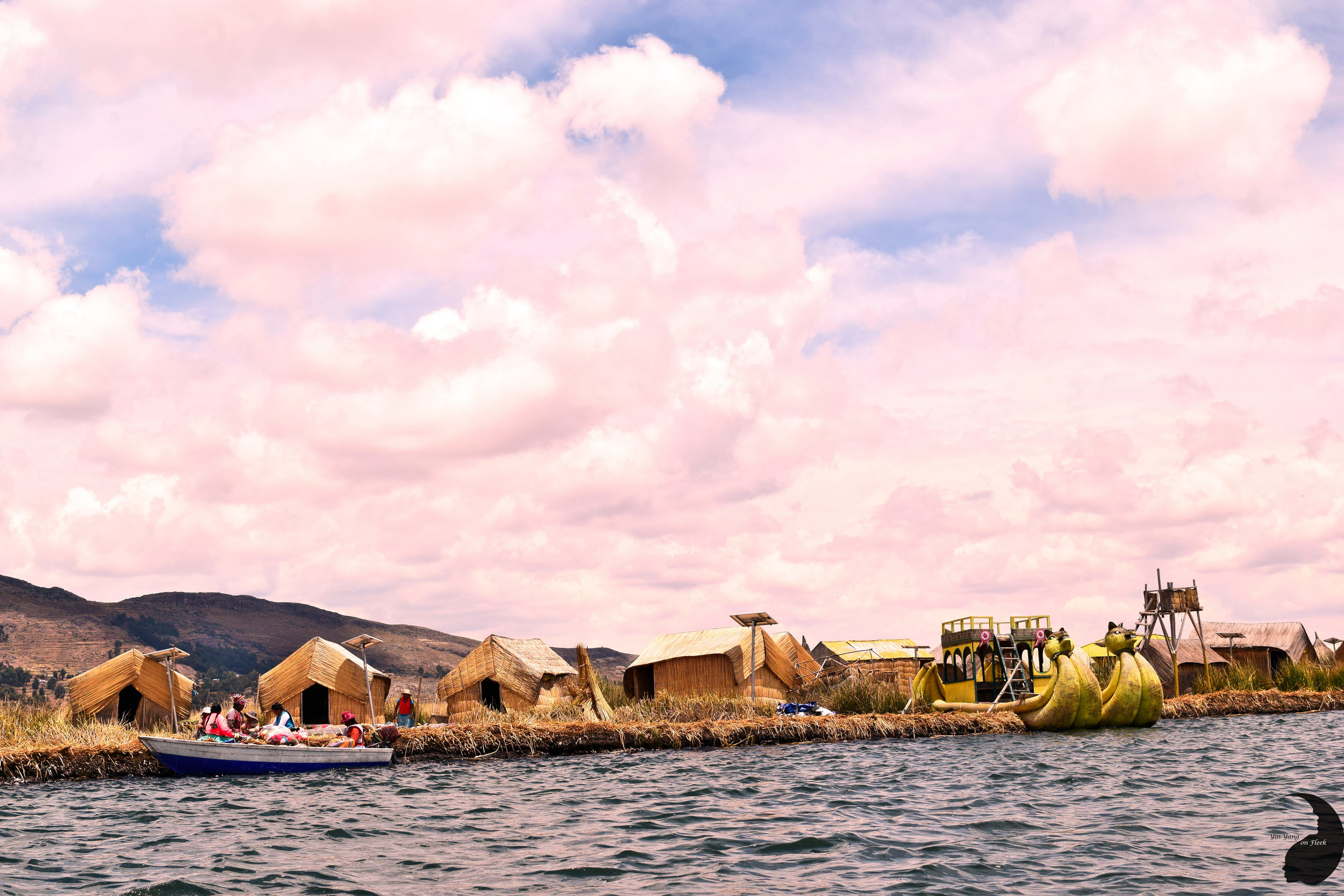
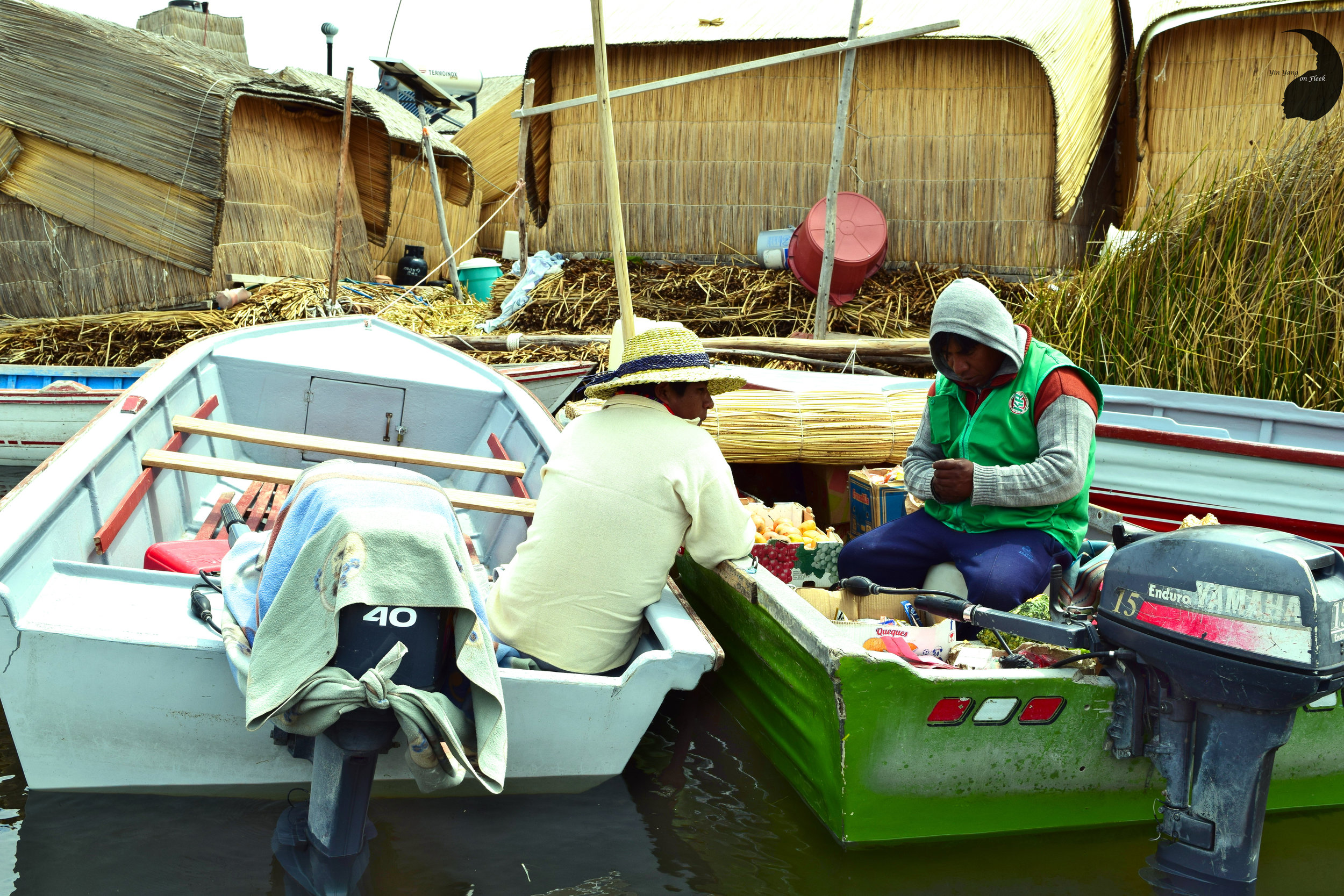
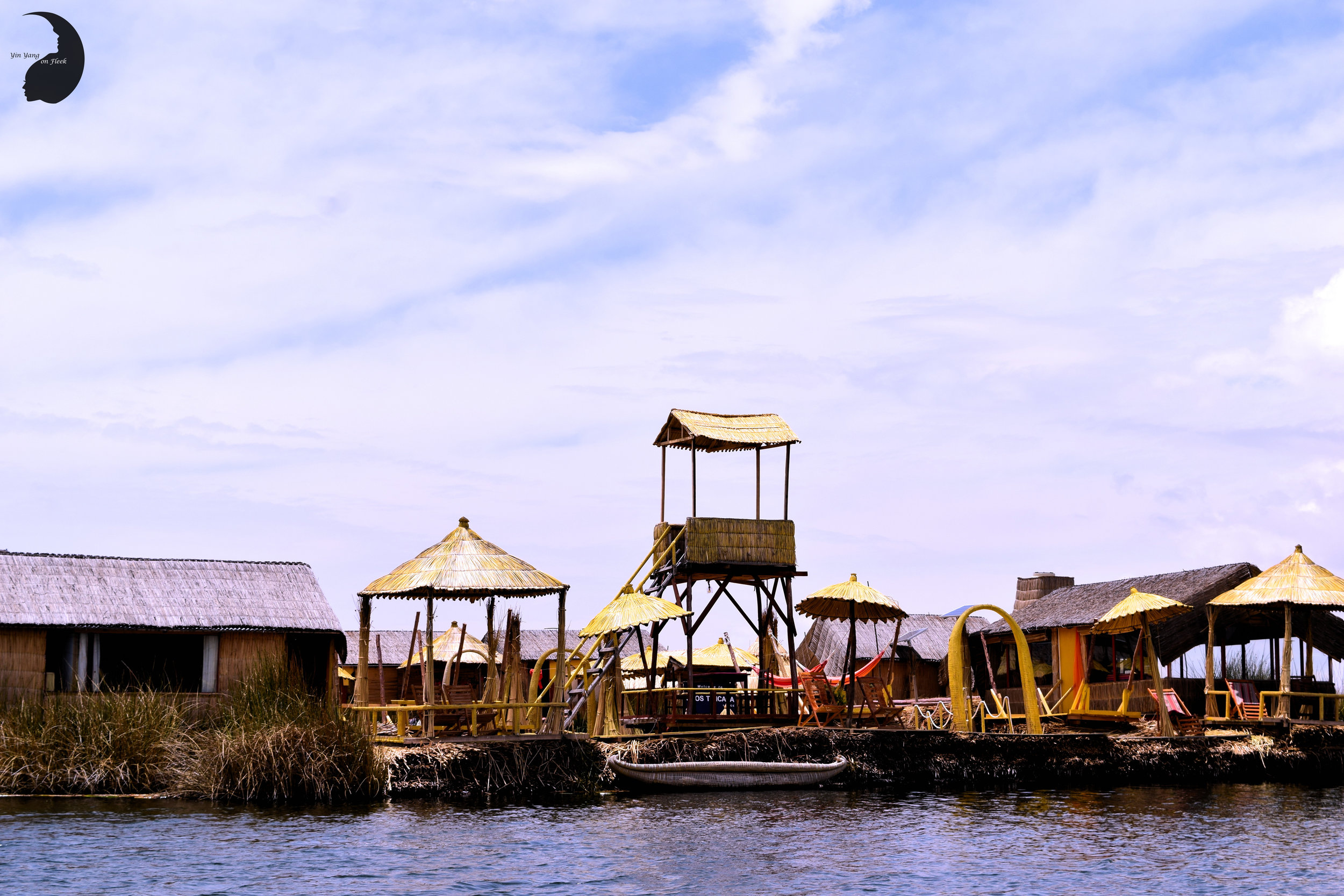
Details
Cost: 210 soles per head (~ 65 USD). This cost includes accommodation; transportation from your hotel in Puno to the Uros islands and back to Puno; meals; and activities such as cutting totora reeds, fishing, and cultural exchange opportunities.
There is an additional charge of 8 soles per person (~2.5 USD) for your island entry ticket fare.
Also, if you are staying at a hotel that is on the outskirts of Puno (not in the city center), there is an additional charge of 10 soles per head for transport each way. We had to pay to be picked up from Mirador del Titicaca, but were not charged for our return trip to Casa Andina Premium.
Accommodation: We spent a night in the most adorable little cabin on the floating island of Uros Khantati. The room was adorned with the vibrant hues of hand woven knits. The decor truly represented the culture of Peru that the locals take so much pride in!
Our meals were wholesome, fresh, and delicious. Requests for vegetarian meals were accommodated. Our little room was cozy and the bed was comfortable. Speaking about the first of many experiences- we used our very first compost toilet! We did not have access to showers during our stay, although our hosts mentioned that they were available on the island. During our visit, the weather was a little temperamental. It was chilly and drizzling most of the time. Since sunshine was limited, the solar panels on the island were not well charged and we were advised to avoid a shower if we could do without one for the day. Oh well- at least we had some of the perks of visiting off season- we literally had the whole island to ourselves! So while we had to bundle up in layers, Yang and I hopped, skipped, and jumped around, using every opportunity to capture amazing memories!
I know some people may feel odd about this, but we loved every bit of dressing up in our traditional Peruvian garb. I think we fit right in on the island. What do you think?
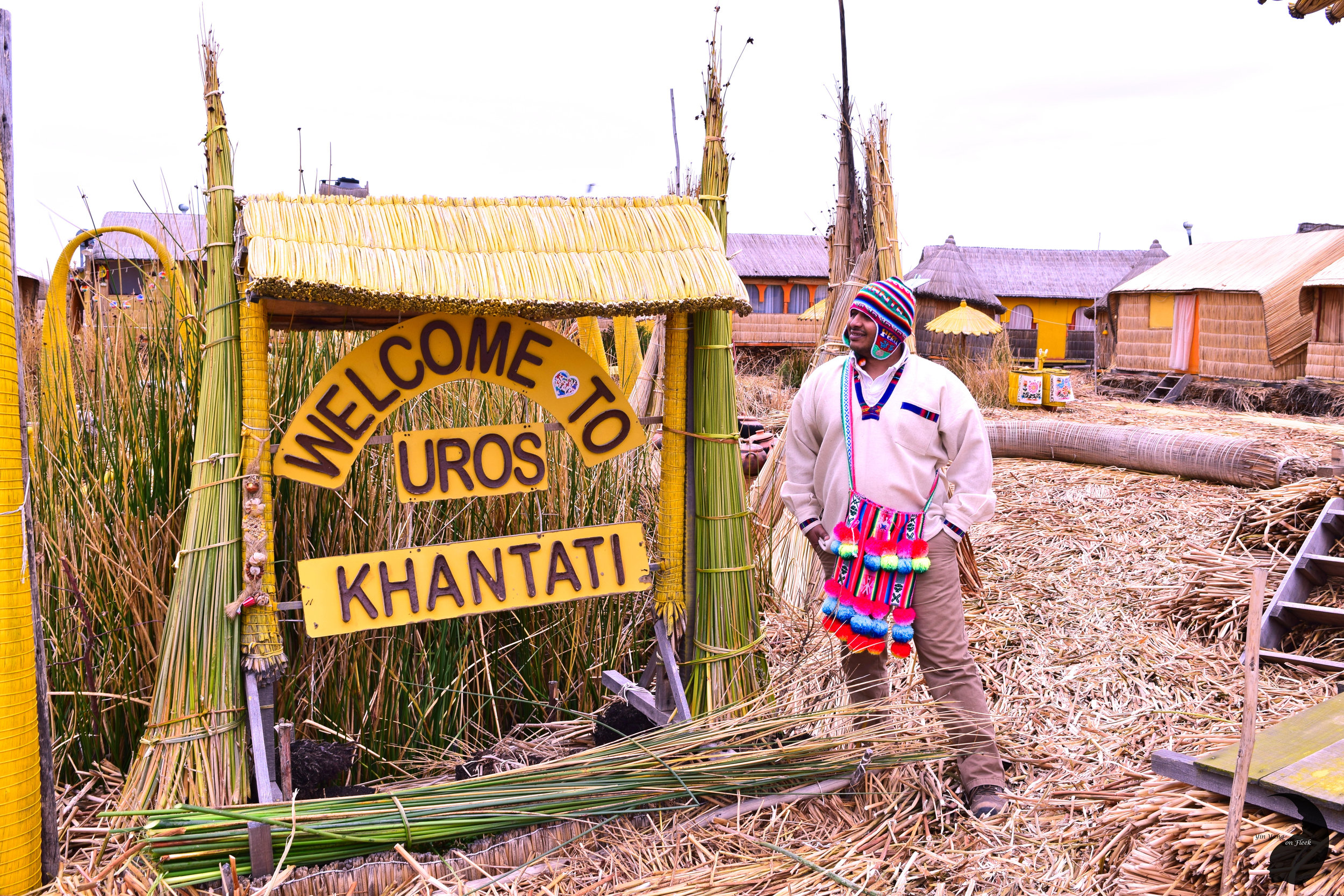
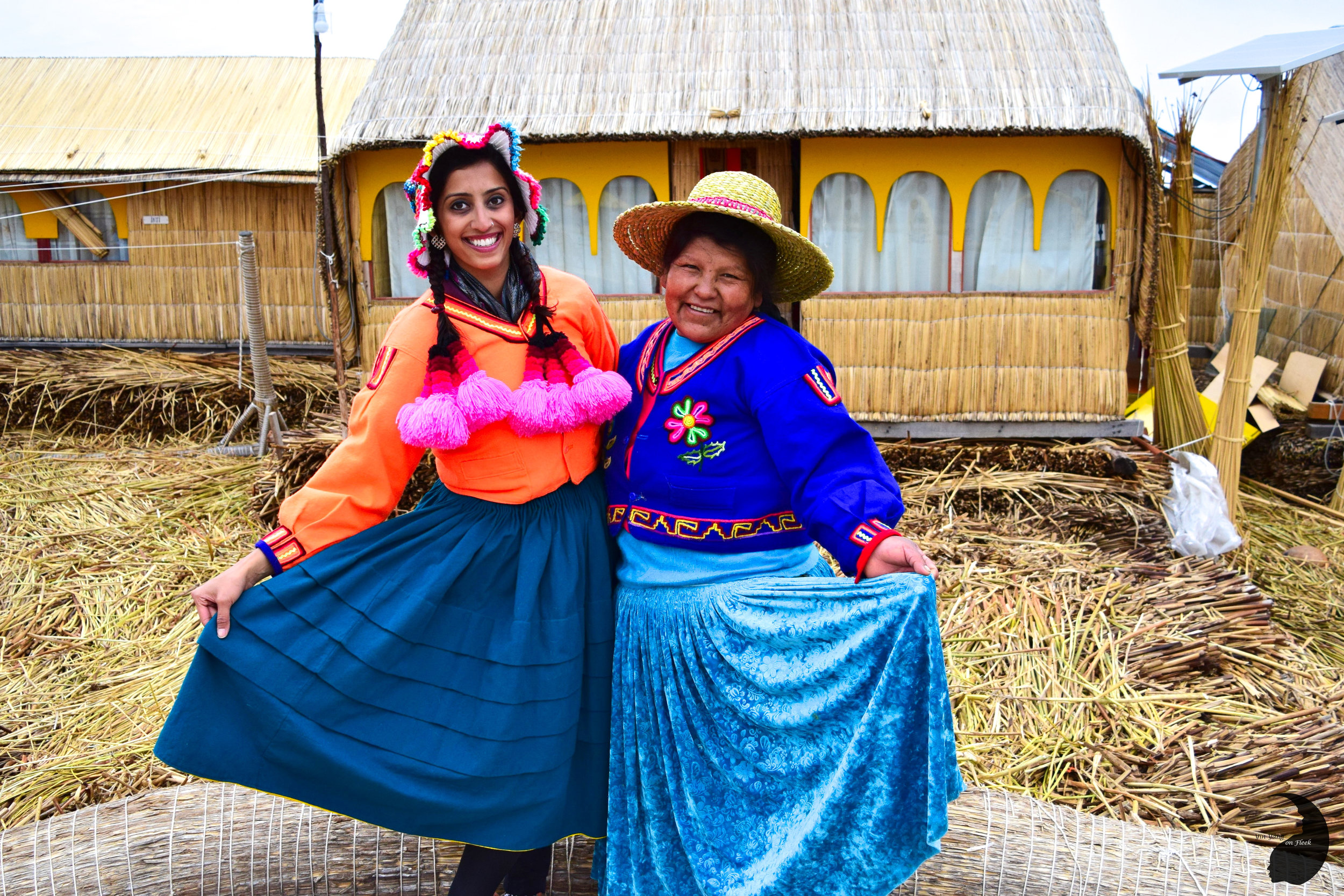
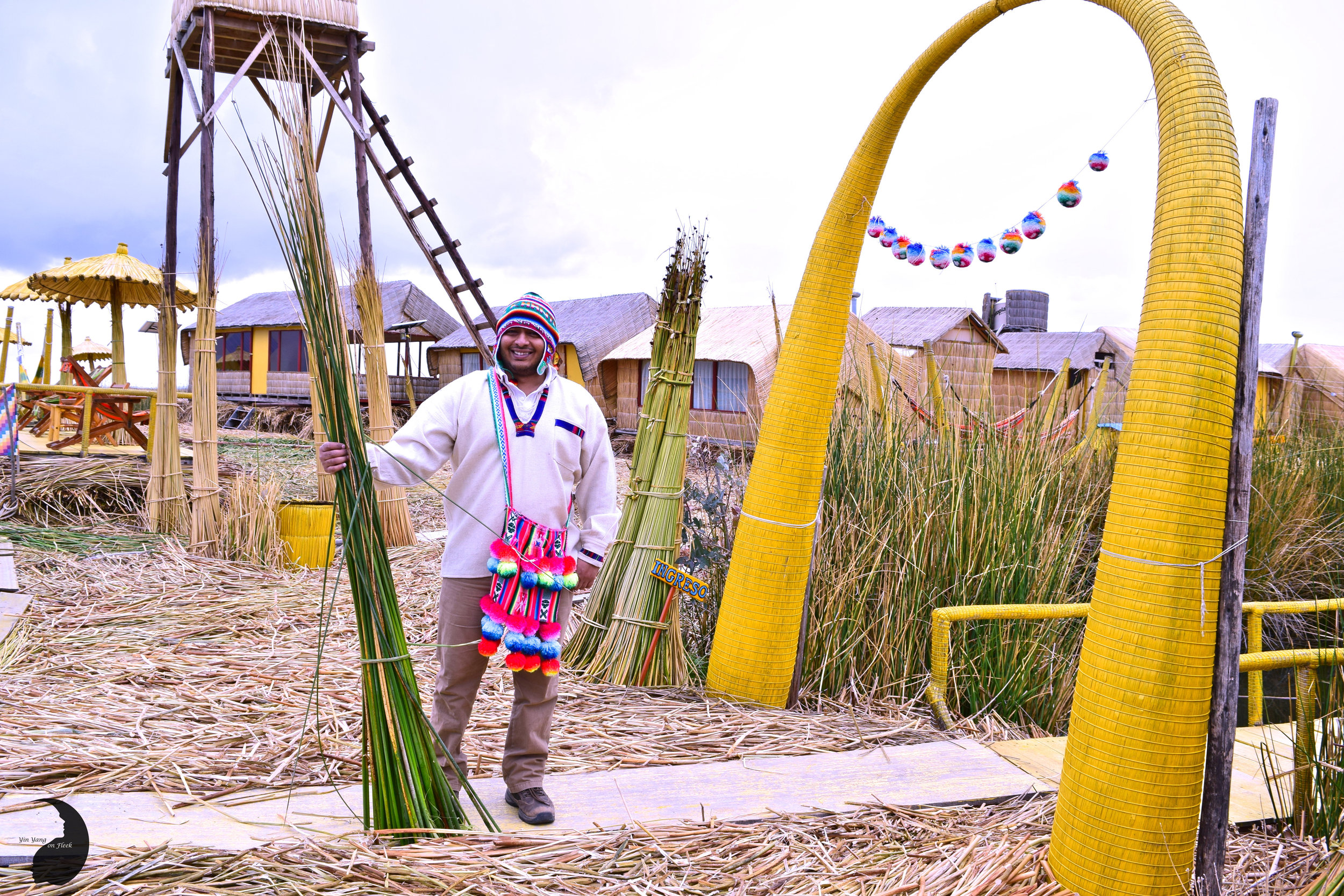
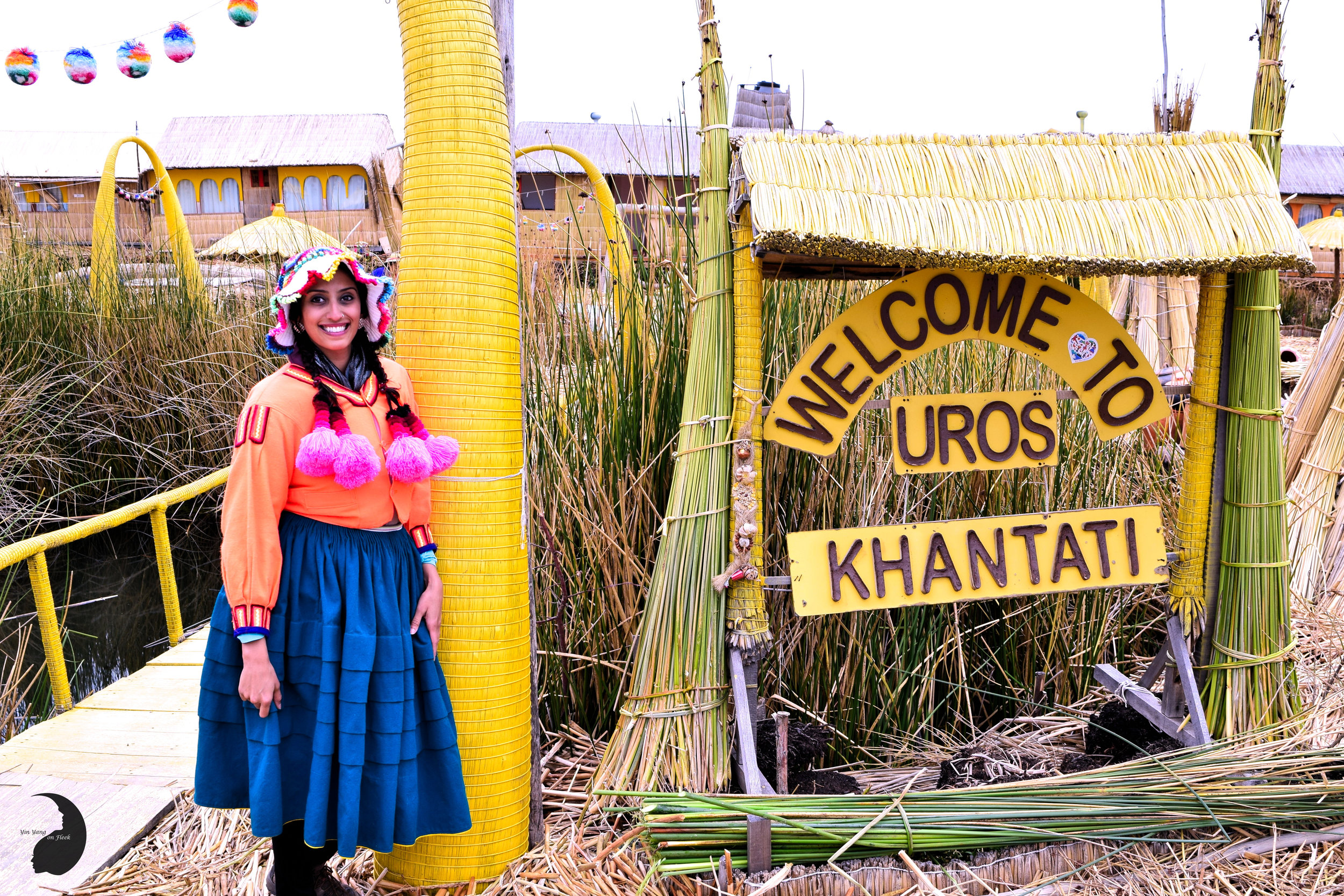
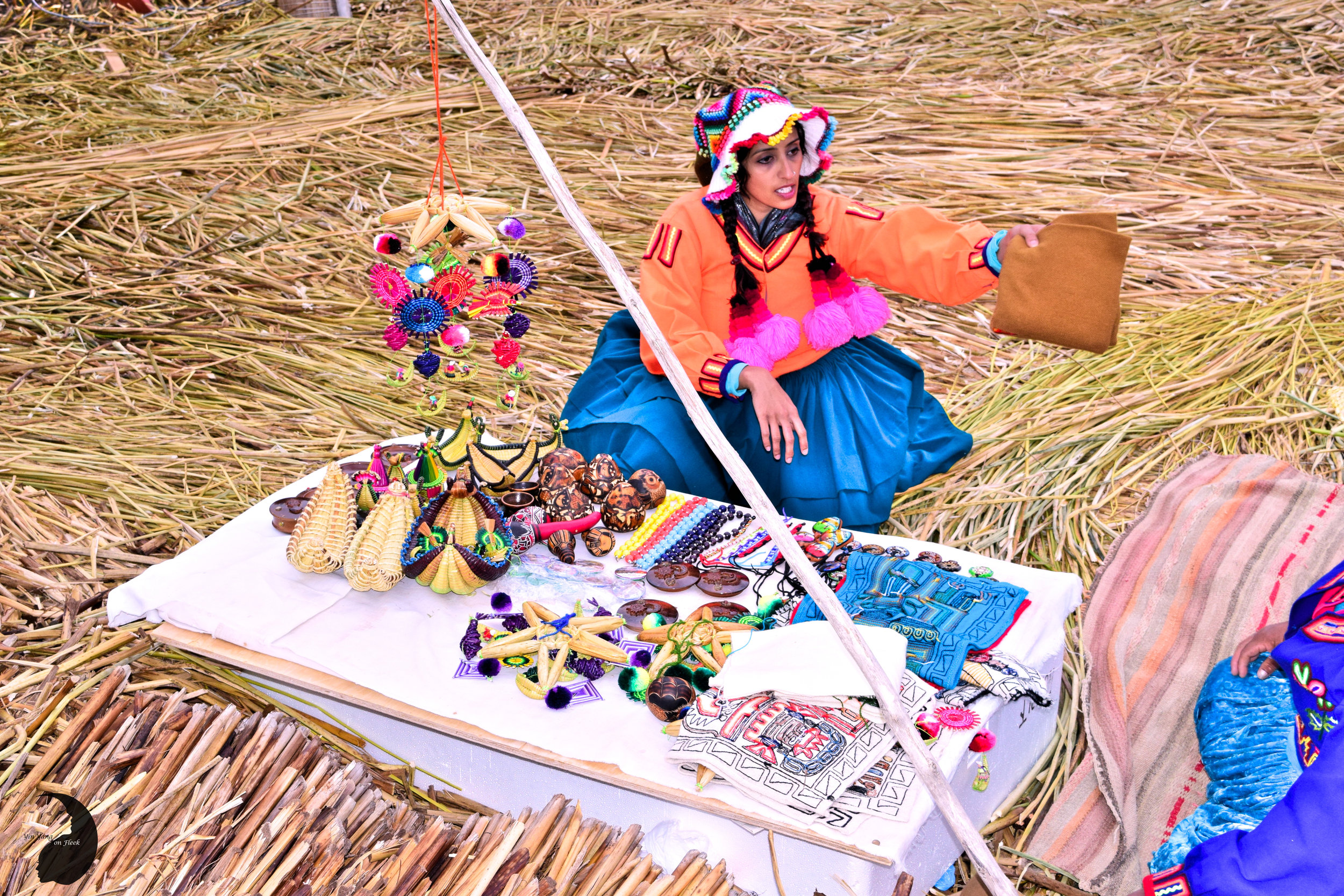
During our short stay at Uros Khantati, we got to try out many experiences. We sailed on a large traditional reed boat made by the owner of the island. We learned about how the life of the Uros people depends on totora reeds that grow abundantly in the surrounding lake Titicaca. The daily routine of the Uros folks includes: cutting reeds; depositing reeds on the islands to strengthen and replenish the floating land's foundation; and using totora reeds to build all sorts of amazing things such as boats, homes, tools, and collectibles among other things. We were so intrigued by how nifty these villagers were. Take a look for yourself! Most of what you see in the pictures below are creations from totora reeds! No kidding!
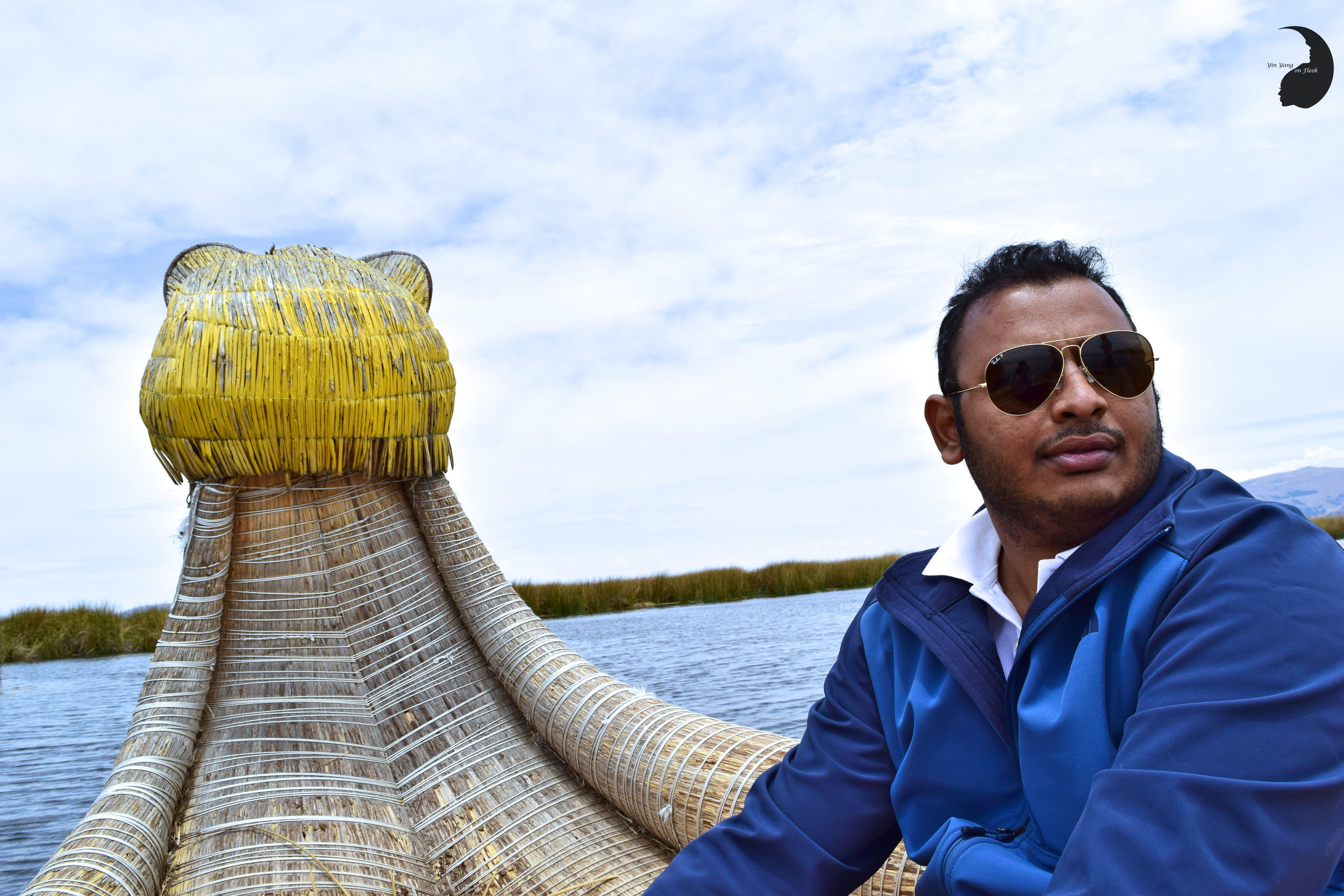
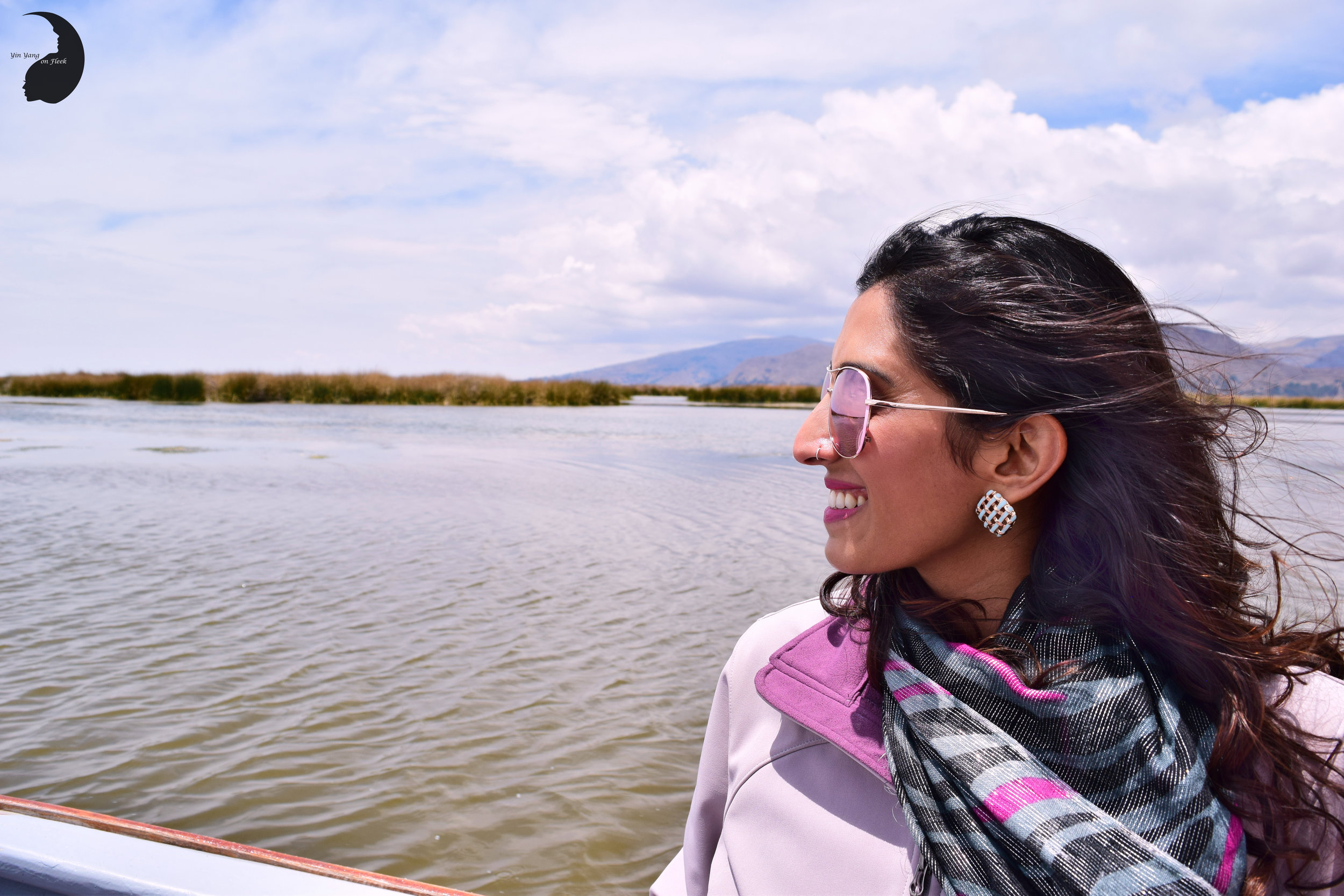
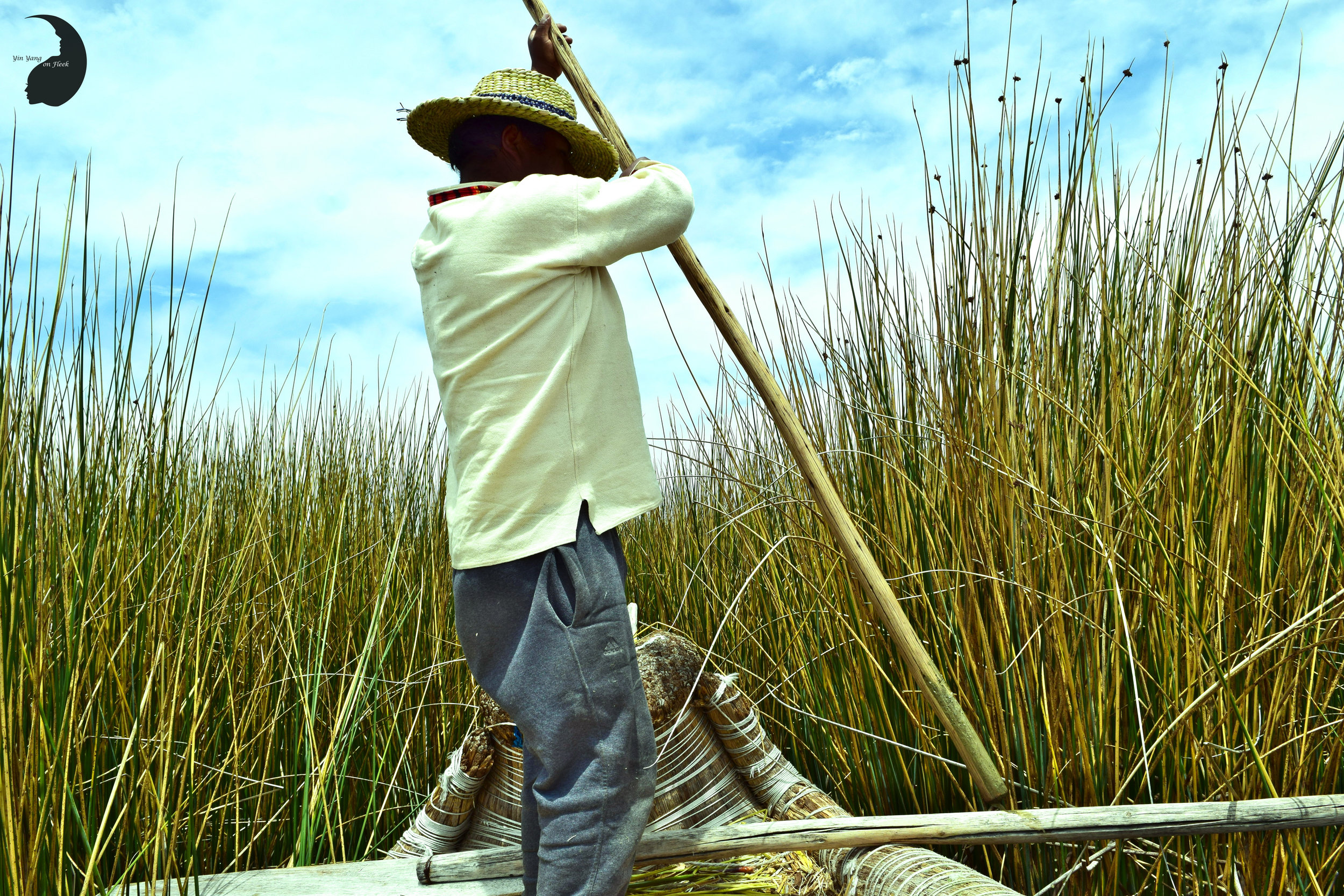
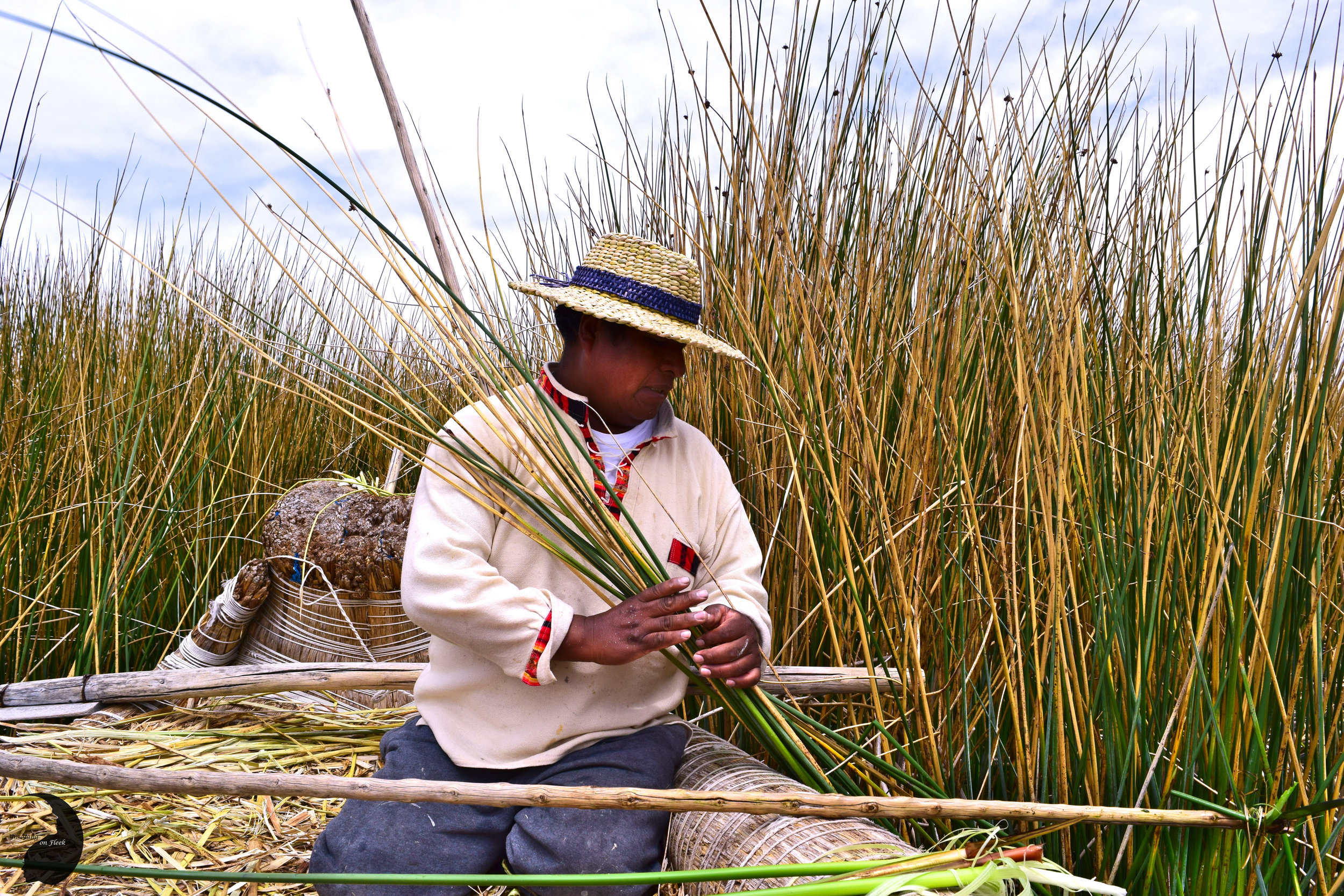
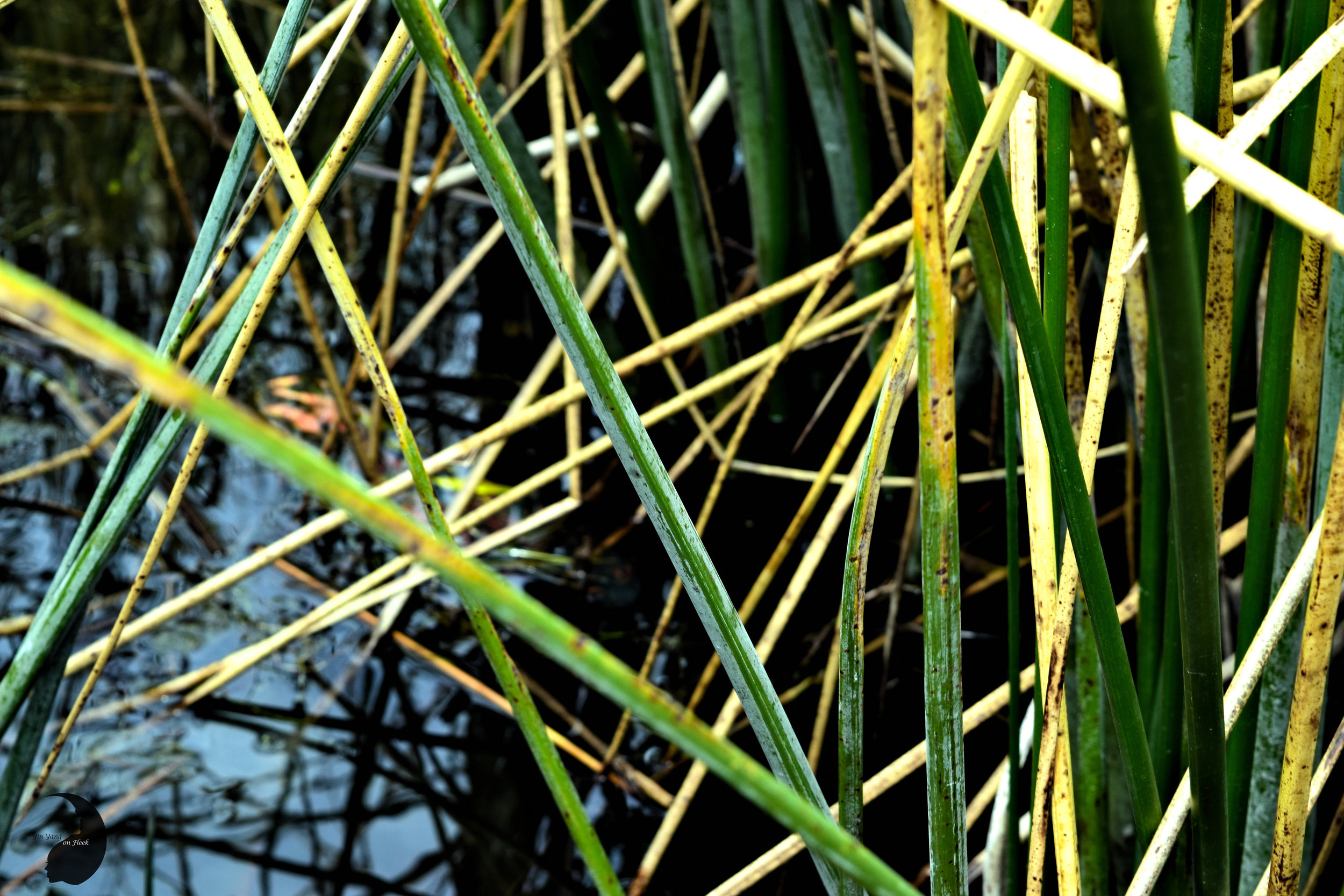
INTERESTING FACTS
(Nerd Zone Alert)
1. Lake Titicaca is the highest commercially navigable lake in the world at an elevation of 12, 500 feet above sea level. It is also the largest lake in South America and is located at the border of Peru and Bolivia.
2. The Uros floating islands of Peru are man made islands that house the indigenous people of the Uros community. This native group initially started living on the floating islands to isolate themselves from their commercial neighbors. However, owing to the popularity of this unique tribe, the Uros islands have now become a major touristic attraction with scores of travelers visiting them to get a glimpse into their simplistic and interesting daily life.
3. Forty-two man made floating islands are interlinked by a strong underwater rope network. So while the islands are floating on water, they don't float away with the current of the water. Just throwing that out there in case your curious brains are making speculations!
4. The life of the Uros tribe is centered around the resilient totora reeds. The reeds are strong, yet spongy and succulent. It is quite fascinating to see the many creative ways in which this vegetation is being used on the floating islands. They form the foundation of the island floor. So as you walk on the islands, your feet will sink in the spongy totora reed floor! The reeds are cut and dried out and then used for various purposes such as building houses, crafts, and boats.
5. The islands use solar panels for electricity. They have a small school for their community children. They even have a nurse at a clinic on one of their main islands.
For higher education, students may opt to study at the university in the city of Puno. As young adults are being exposed to the comforts of the city, they are moving out of the floating islands. Yet some natives are determined to keep the unique heritage and culture of these islands alive.
And as the saying goes, "All good things must come to an end!". While the feeling is bitter sweet, we are coming to the end of our Peru travel series. Signing off this week with a few dreamy couple clicks :)
If you enjoyed this post, you may also like...













